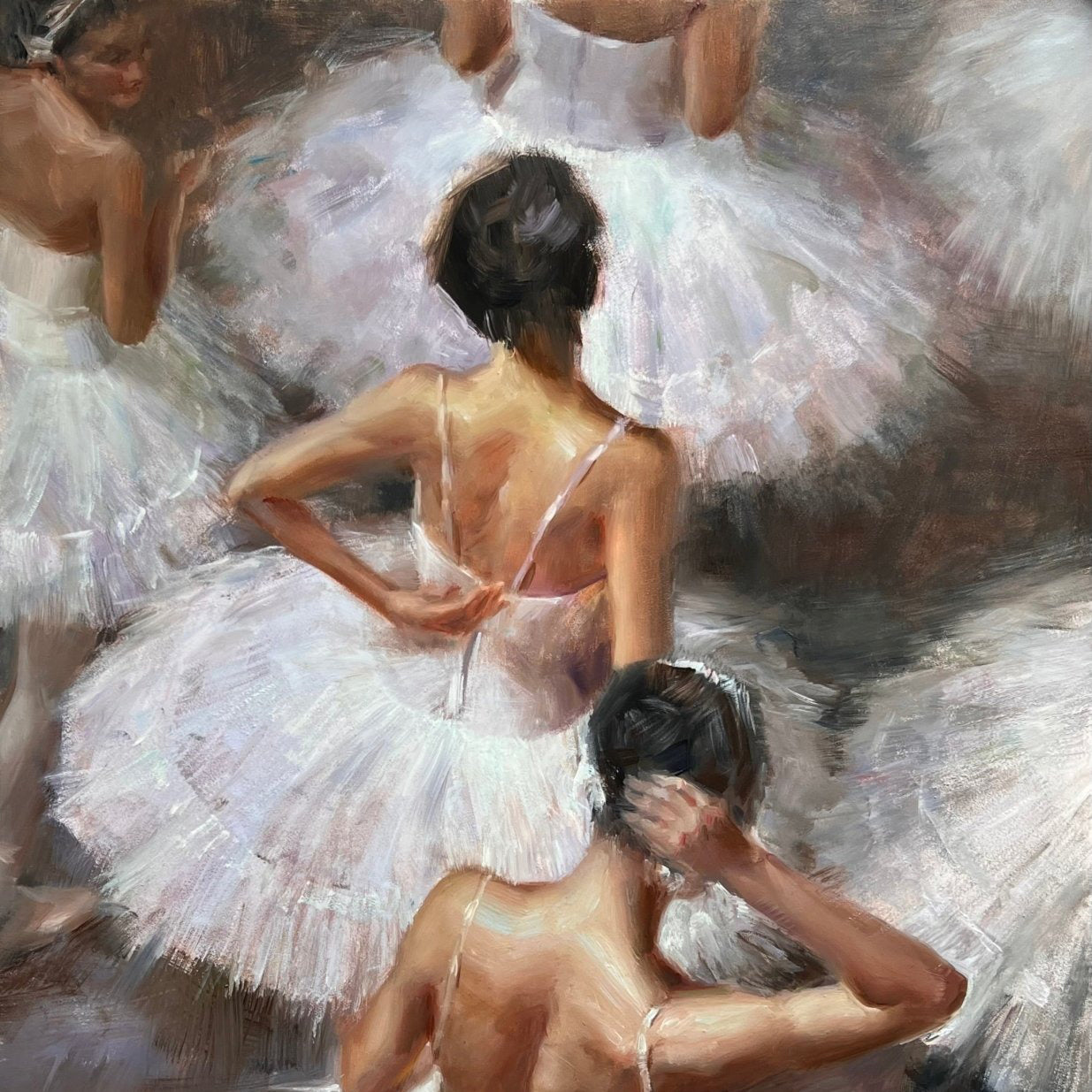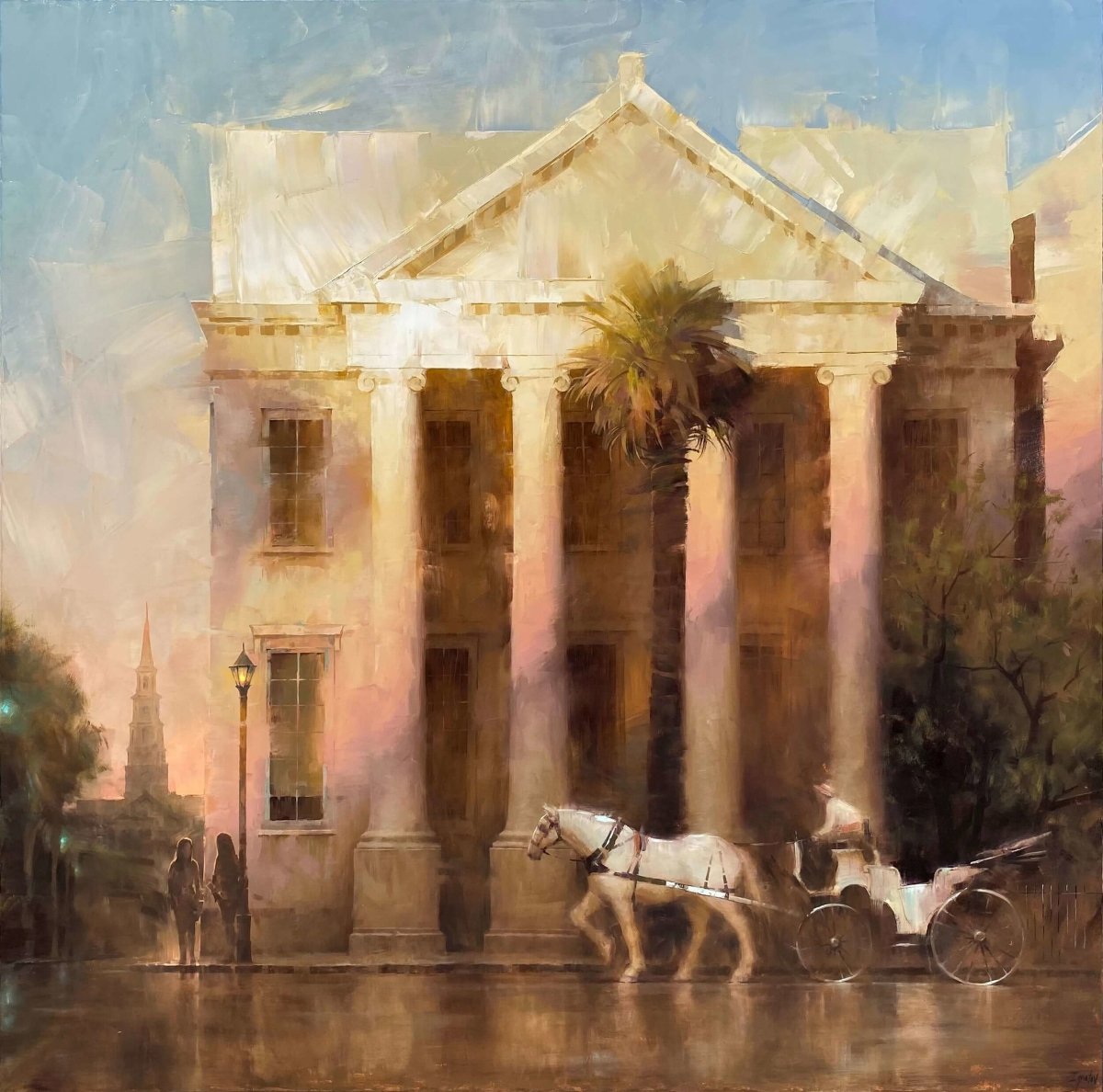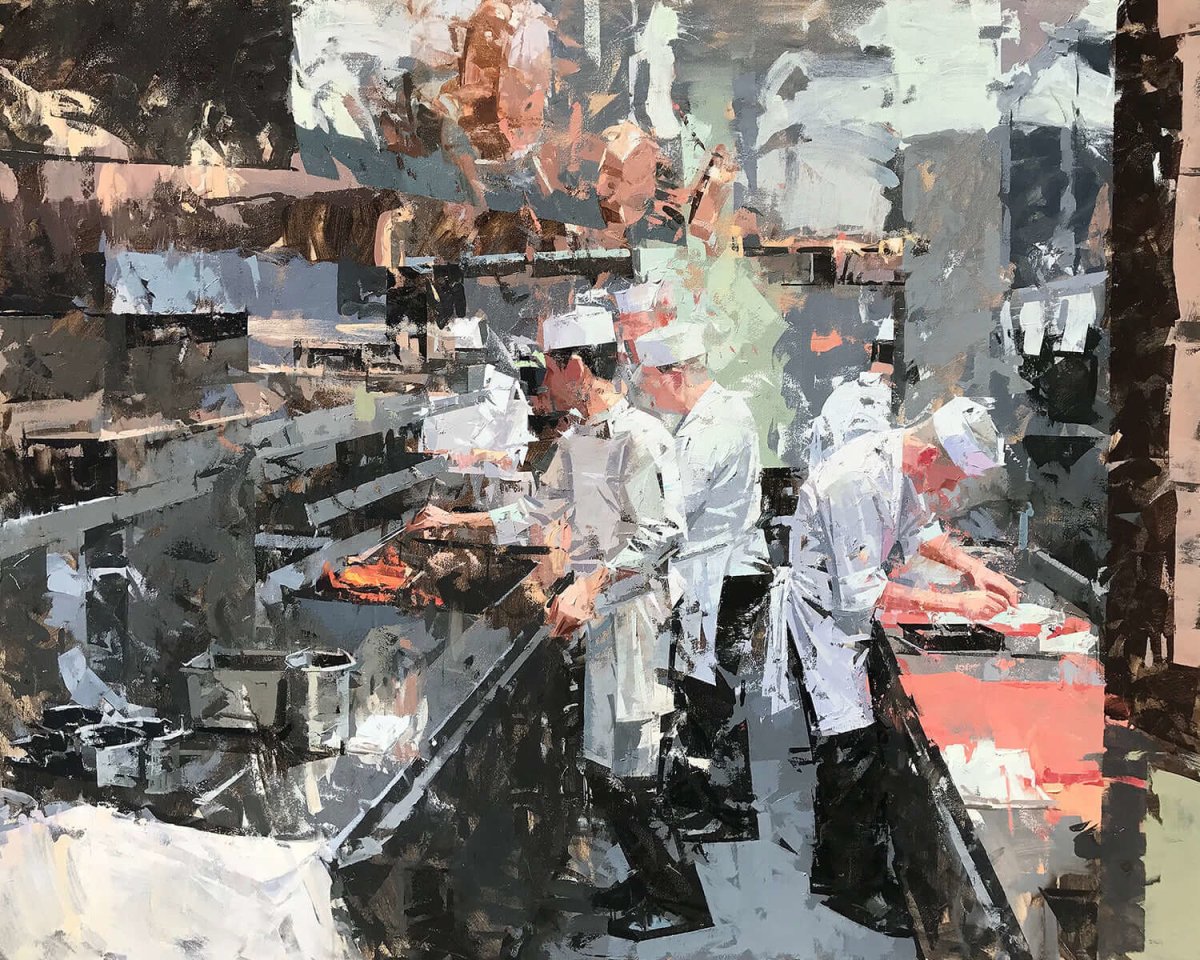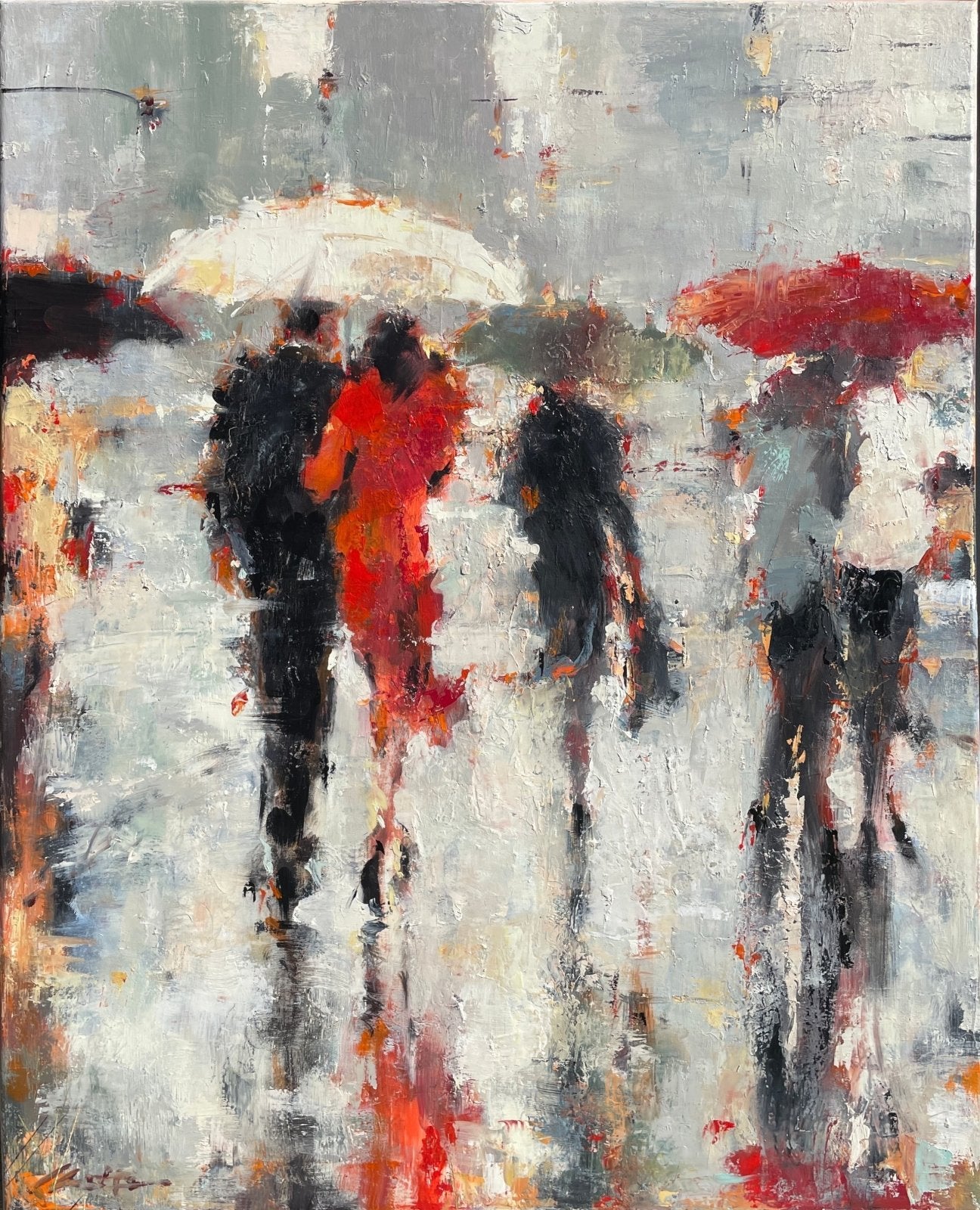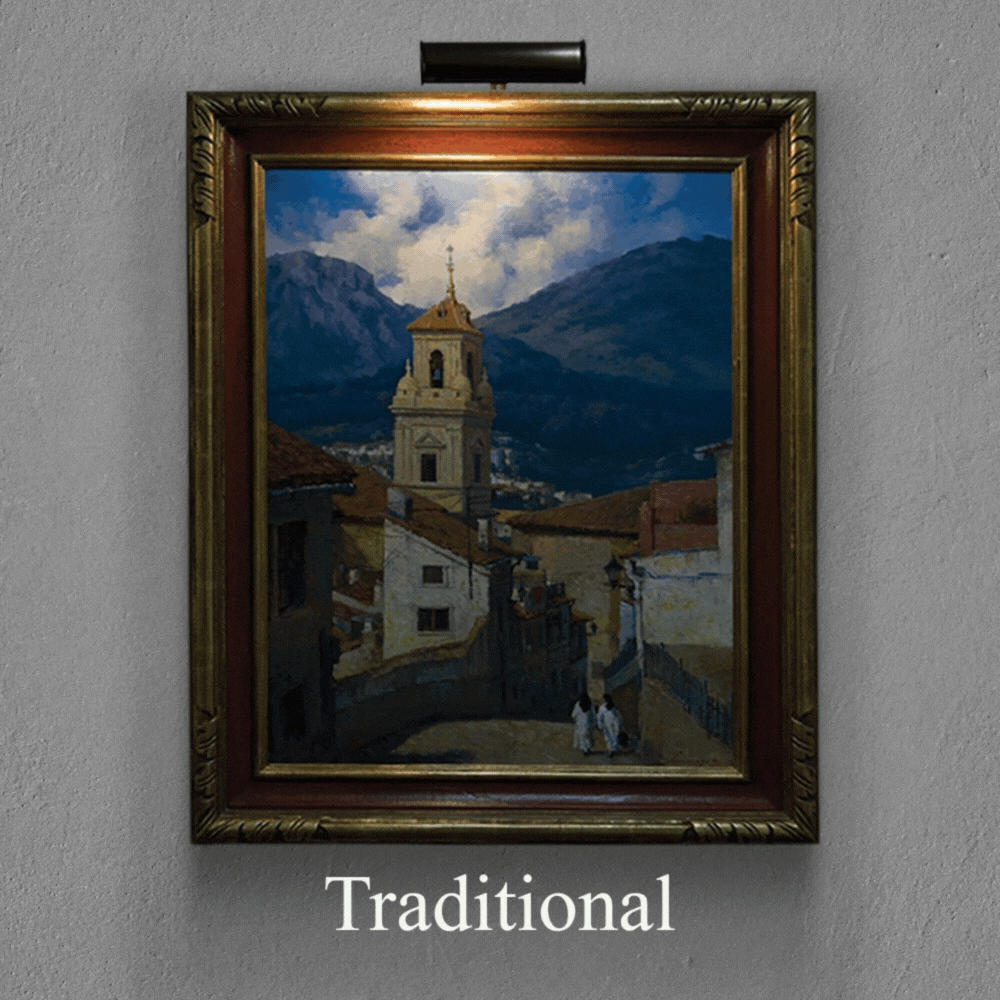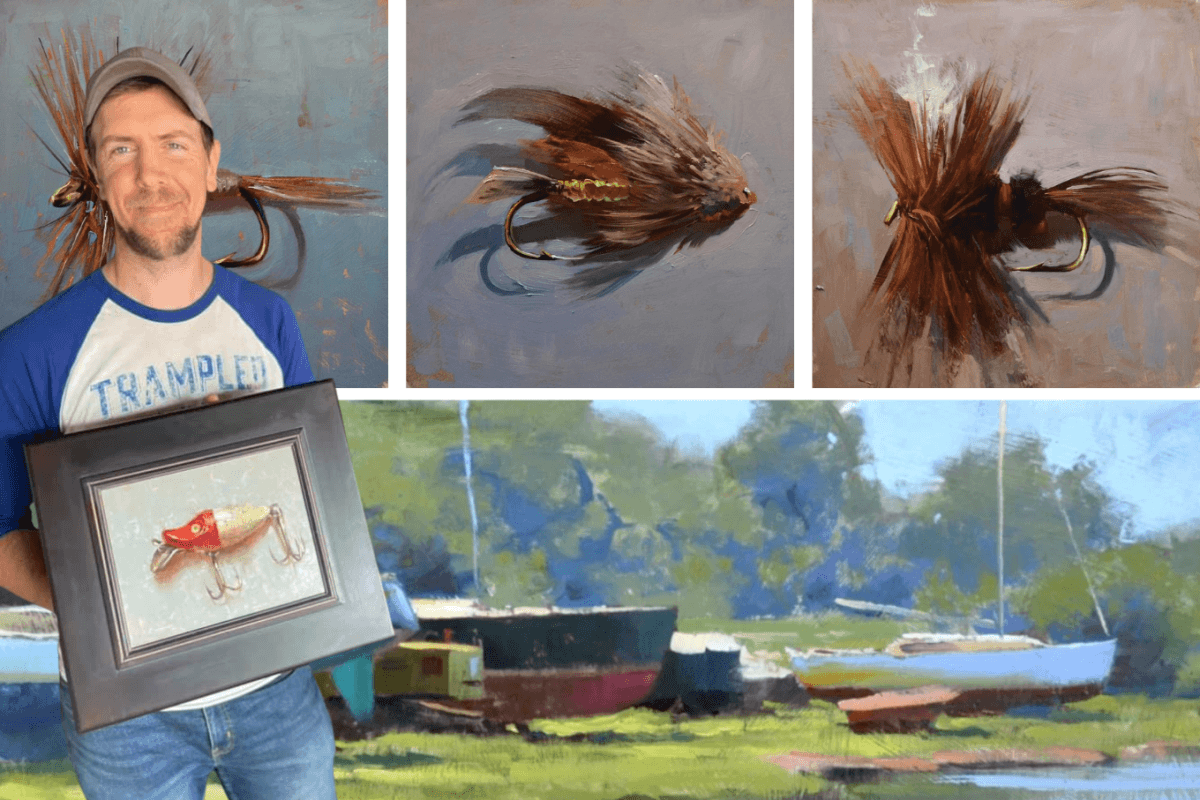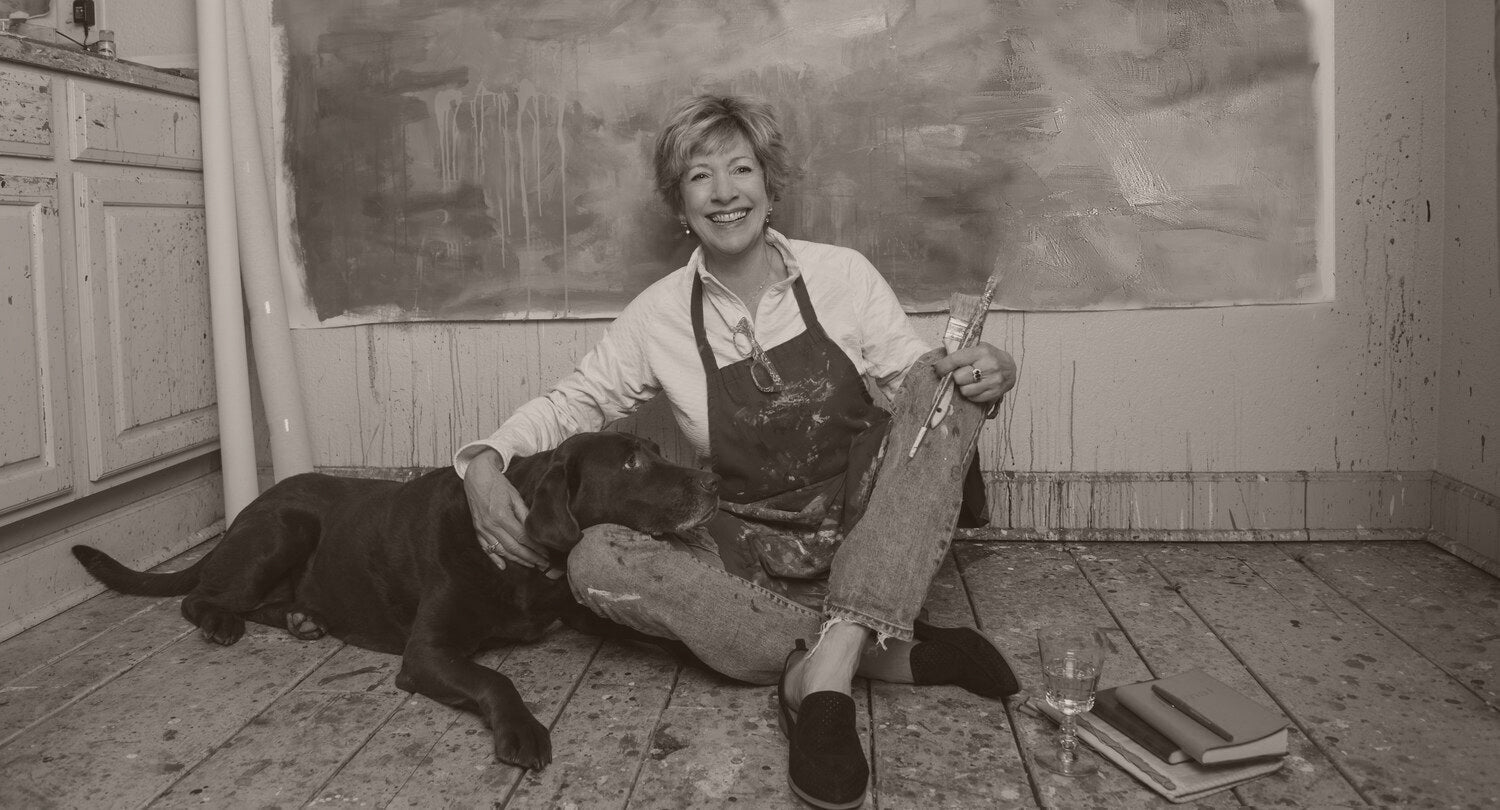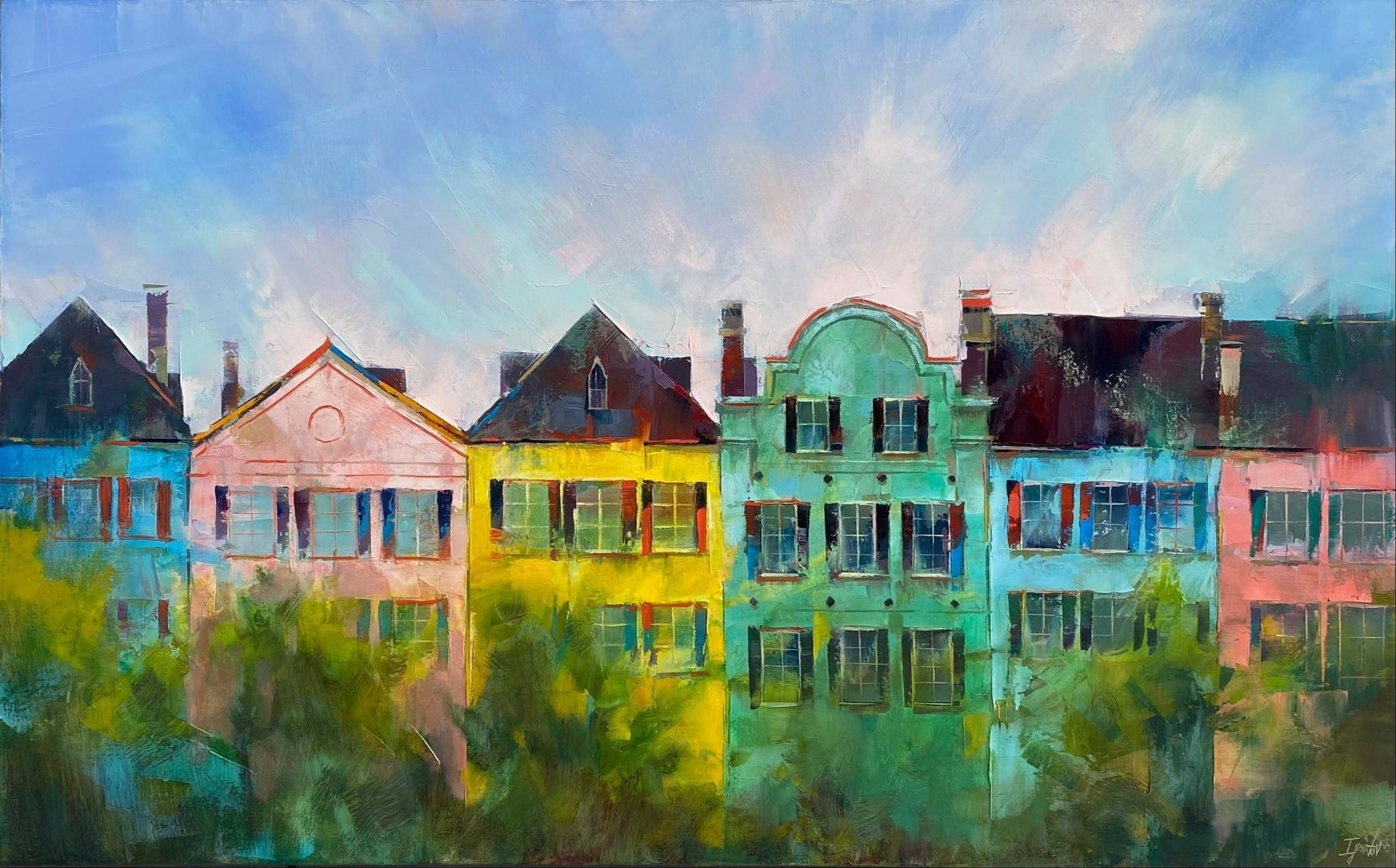Marc Anderson: Artist Spotlight
Seeing Daytime Light with Marc Anderson
by Kyle Constalie

Marc Anderson is in the passenger seat on a North Carolina highway, making his way back home to Wisconsin. The sleeves are rolled up on his plaid checkered shirt, and he’s reflecting on his most recent visit to Charleston, SC. He’s taking time to talk about his paintings that have been inspired by his relationship to the area know as the South Carolina lowcountry.
Not too long ago, he says, he discovered something new and exciting. He’s referring to the first time he painted a still life of a fishing fly. “I realized how much I enjoyed the abstraction it involved.”
Anderson says he has come to consider the process of creating these still lifes as a welcome activity. He explains that this painting style is different from the normal style he uses to create his representational landscapes. “There is less drawing involved compared to a landscape or a cityscape.” The more relevant goal becomes “to capture different textures.” He is allowed to explore abstraction to a degree that the actual subject becomes, in some sense, secondary. “I can be freer as an artist, in a way.”
Anderson’s fishing fly still lifes are highly versatile paintings. The flies appear at rest, yet at the same time they seem like they could almost be in some kind of subtle flight, like they could be gently buzzing in place the way a real insect would in the world. They are offered to the viewer against backgrounds that are mellow and soothing. Anderson points out that these backgrounds are “muted with warm and cool colors.” The backgrounds seem to serve two functions. The first is to make the painting easy to integrate in most rooms among other art or home objects. The second is that they allow the main subject to be most effectively featured.

You can find peaceful pleasure by considering the subjects of these still life paintings. Anderson says that in these paintings he is “not beholden to the subject.” Nonetheless the fishing flies are feathery and have flare about them. The paintings highlight the craft of making the flies, which might otherwise be overlooked if you see the flies in real life. While the fishing flies are at rest, they propose the possibility of action, notions and dreams of taking them outdoors and engaging in a meaningful pastime. It’s hard not to imagine sending these lures through the air, to quietly anticipate the event of their landing on a water’s surface.
Those familiar with Anderson’s work know that his fascinations are not limited to still life paintings. Experiencing Charleston doesn’t seem possible for Anderson without turning to landscapes. “That’s one of the reasons people love the city. It’s a beautiful place. Not just the history and the city, but the surrounding natural area … it’s a beautiful setting.”
This statement becomes self-evident when observing his 2022 work Winding Off into the Sunset. Here the viewer has a chance to approach a deeply atmospheric wetland scene. This is another of Charleston’s charms that Anderson finds mesmerizing. “As a landscape painter, I’m usually thinking not just about what’s unique about a place, but how do I capture that in a visually appealing way, capture some of that romance of the landscape?”

Thanks to the proximity of the ocean, the air in the area creates uniquely stunning visual intrigue. The sunlight interacts with water molecules in the sky, and this phenomenon works to “push the depth” and to create what Anderson calls “a totally different color harmony” than you would find in other places. Depth is a primary feature of Winding Off into the Sunset. “Especially at sunset, the sunlight can light up the atmosphere, so you get much warmer colors in those deeper spaces, the further back you go.”
Here, the viewer sees a waterway that is essentially heaven-colored as it meanders away toward a warmly glowing horizon. It looks like the water is going home to the sun. Thanks to its contrast against the foreground of gorgeous, dark grasses, the waterway gives the impression of making its own light. Because the surface of the water is reflecting the sky, it looks like the sky has set itself down and assumed the water’s shape. The end result is that, along with a wide-open sky, we discover a new version of sky that narrows and curves as a stream.
Part of what makes the waterlight appear so vivid is the contrast of the grass edges. “What you’re seeing is the shadow side of the grass, because they’re all backlit, and so what would normally be a dark shadow is now being illuminated by the atmosphere itself.” This may sound like a minor thing to remark on, but it’s an important factor in making the water look more vibrant, and it helps create depth in the painting. Anderson talks about how this would be different if the painting were of water by itself. “Because water is a flat plane, you’re not getting as many shadows.”
Winding Off into the Sunset is a painting “about how light reacts on different surfaces,” Anderson says. It’s about “almost pure color coming from the sky.” In the sky itself, which comprises about one third of the painting, you see both warm and cool. The cool colors in the sk colors y are achieved by the inclusion of clouds. To see it is to be reminded that in fact it’s clouds that help make sunsets astonishing. The variation in cool and warm light creates a wide-ranging vision of the sky for us to enter. This painting exists to wander off into, to go along with the water.
Before the sun can recede, it has to reach its highest intensity and give life to the day. Another of Anderson’s paintings, titled Beach Day, celebrates the time when this happens. In this work, you don’t see the actual sun as an object, only all the light it gives. Instead, you are immediately ushered toward an enormous yellow umbrella, which to some degree can perhaps function conceptually as the sun in this painting. “It’s the first thing your eye is drawn to.”

In Beach Day, the large scale of the yellow umbrella is balanced by the dark color of the smaller, blue/green umbrella behind it. The second umbrella, in real life, is probably about similar in size to the yellow one, but its distance is what makes it smaller to our eyes. It’s possible to look at this painting for more than a moment before finally noticing that a family is there, beneath the distant umbrella. “That’s fairly intentional.” They are in the shadow, included as more of a suggestion than as a point of emphasis.
Alternatively, the shadow underneath the yellow umbrella is empty. Anderson says this is meant as a gesture of invitation. “That umbrella is meant for you.” The viewer is being welcomed to a special place in the shade. He says he wanted this painting to be “much more about the feeling of a beach day” rather than people at the beach. It feels instructional to be offered this insight into the artist’s decision-making.
This beach painting makes the chance for a viewer to place themselves inside the artwork even more explicit. As with so much of Anderson’s work, it’s a vision we want not only to be around, but to go inside of. “Ultimately, the painting that you put out there–it’s up to the viewer how they want to read it. It’s an opportunity for me to make a good painting that is also interesting to them.”


